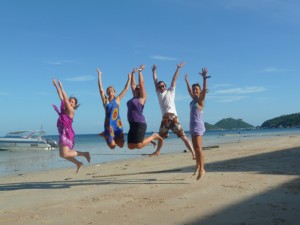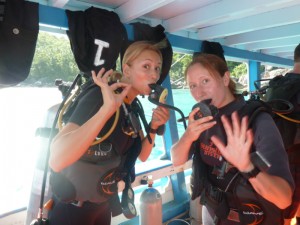Since June 2014, Sunshine Divers has implemented the NEW-REVISED PADI Open Water Course. Not much has changed with the course structure, yet only a few additional skills have been added to the program to ensure student divers learn further about the importance of diving within a buddy team, focus on their air consumption and breathing methods underwater, along with extra practice on buoyancy techniques on the surface and underwater.
Our PADI Open Water course schedule is conducted over a 4 day period although we are very flexible with the program times to cater to individual student needs. Our group sizes are small with a maximum of 4 student divers to instructor to ensure this is possible. The general program schedule we offer starts Daily at 4pm with an orientation where you will meet your instructor and watch the first initial videos to give you some insight on what you will be learning over the next few days. Day 2 is where you will head into a confined pool environment and practice all the skills you will need to know to go diving in the open water. Before heading to the ocean - you will still need to complete a few quizzes. Day 3 we start with your first 2 open water dives - here you have the opportunity to experience diving to a depth maximum of 12m. It's pretty cool! You are on the boat for the full morning and back in time to have some lunch after all that energy use underwater. That afternoon you will need to complete your final theory and exams. Finally Day 4 we head out again on the morning boat and complete your last 2 open water training dives to 18m. Yes and then you will be certified!
Recently certified PADI Open water divers include : John Flynn, Srihari Gowri Shankar, and Giarav Shah who enjoyed several dive sites around Koh Tao for their training dives with Instructor Kael Grant-King. The Group size was a total of 3 students with instructor and a Divemaster Candidate Matt Dempsey who was there for additional support.
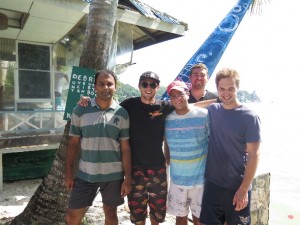

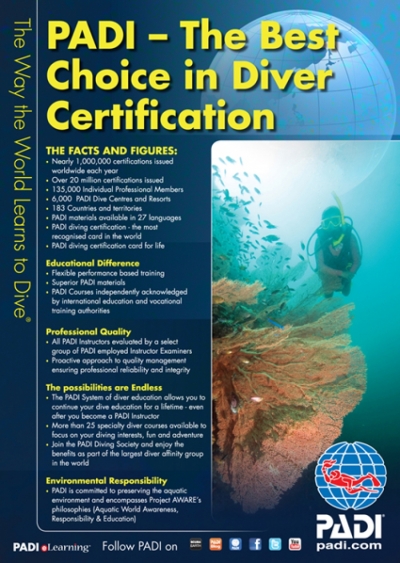
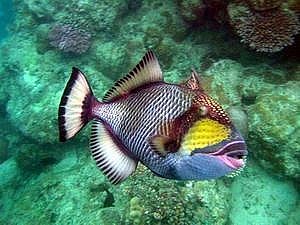 But why are they angry? Like most species, they are protecting their territory. Acting in a similar way to the damsel fish, they chase away what they perceive to be a threat to their zone, which is a cone shape above it, along with the odd bite if they are really angry. During mating season, they get angrier than normal. Moody sods! Some of them, however, are simply attacking because they are morons!
But why are they angry? Like most species, they are protecting their territory. Acting in a similar way to the damsel fish, they chase away what they perceive to be a threat to their zone, which is a cone shape above it, along with the odd bite if they are really angry. During mating season, they get angrier than normal. Moody sods! Some of them, however, are simply attacking because they are morons!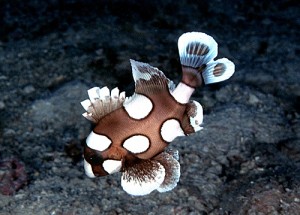 The sweetlips is a fast grower. In its juvenile stages, it is about 2.5cm in length but then will quickly grow to about 60cm. Along with this vast change in size, it also changes its entire colour scheme. It starts as a reddish/brown base with black-ringed white spots which then change to brown spots, which increase in number depending on age, over a white base
The sweetlips is a fast grower. In its juvenile stages, it is about 2.5cm in length but then will quickly grow to about 60cm. Along with this vast change in size, it also changes its entire colour scheme. It starts as a reddish/brown base with black-ringed white spots which then change to brown spots, which increase in number depending on age, over a white base



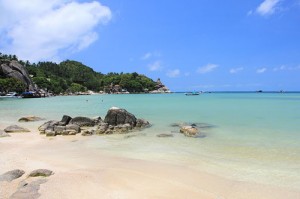


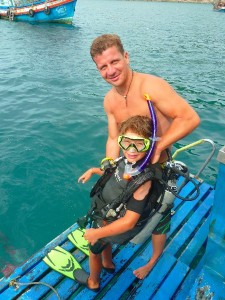 "Father and Son enjoy the experience of the Bubblemaker"
"Father and Son enjoy the experience of the Bubblemaker" "Vincent receives his Bubblemaker Certificate"
"Vincent receives his Bubblemaker Certificate"
